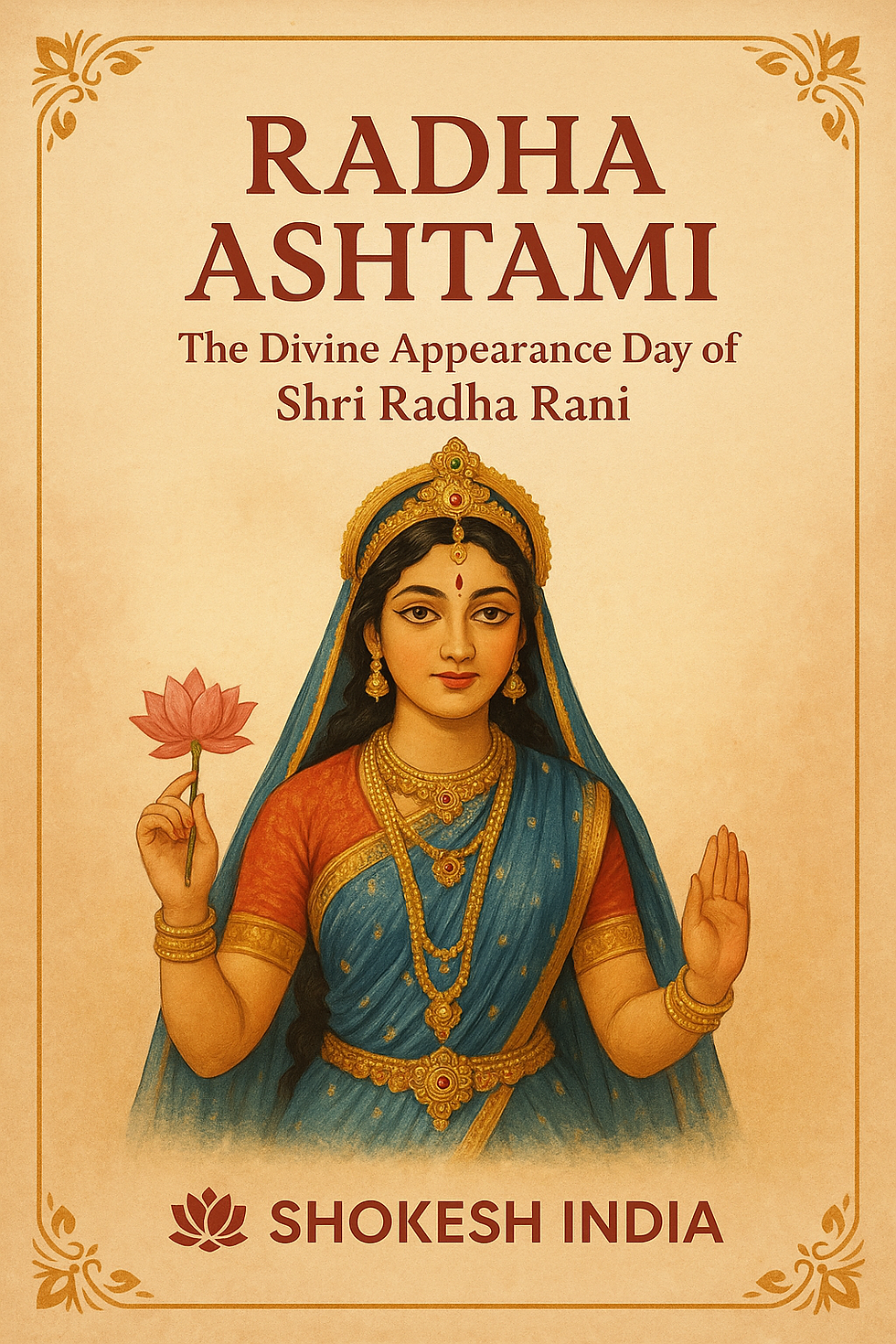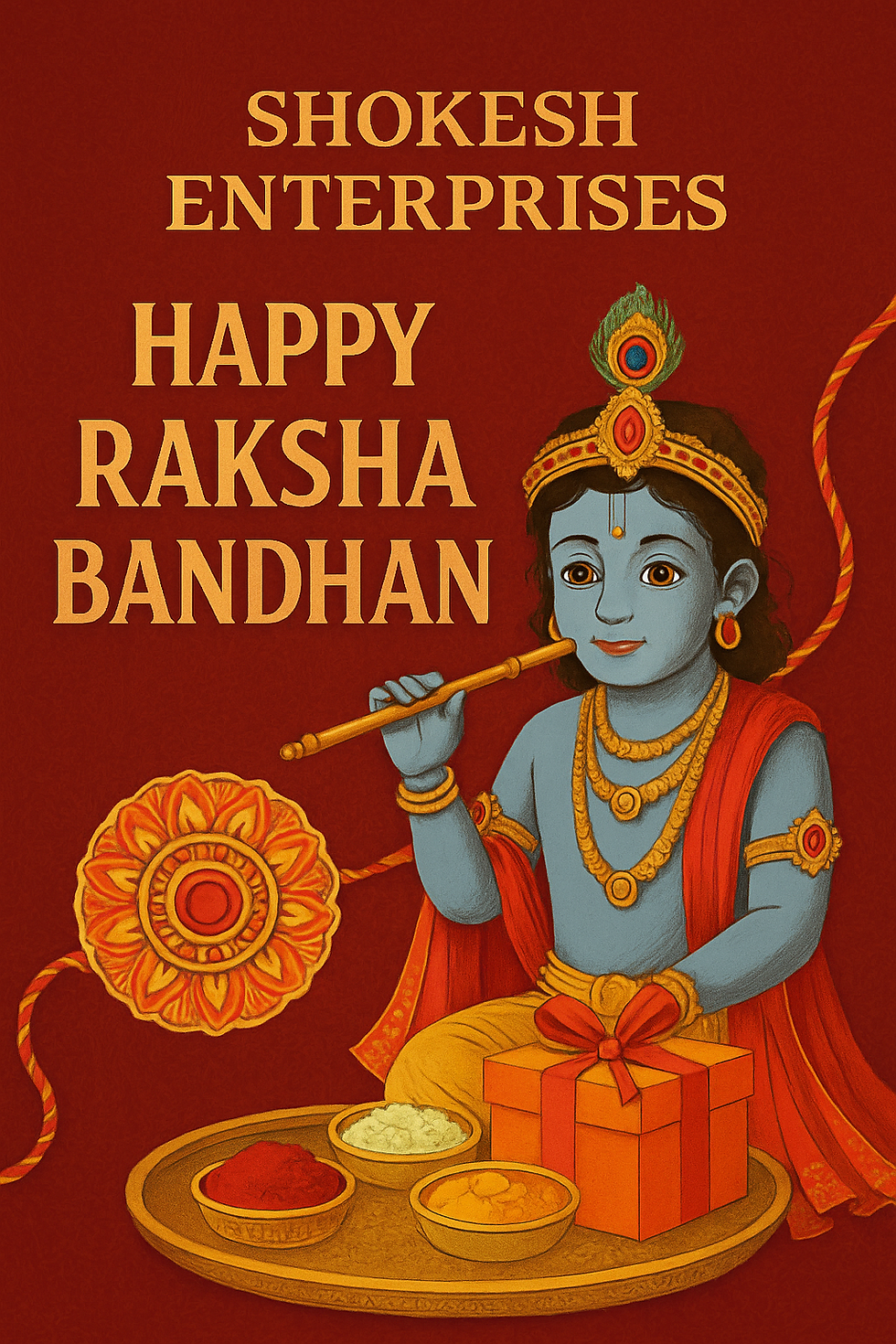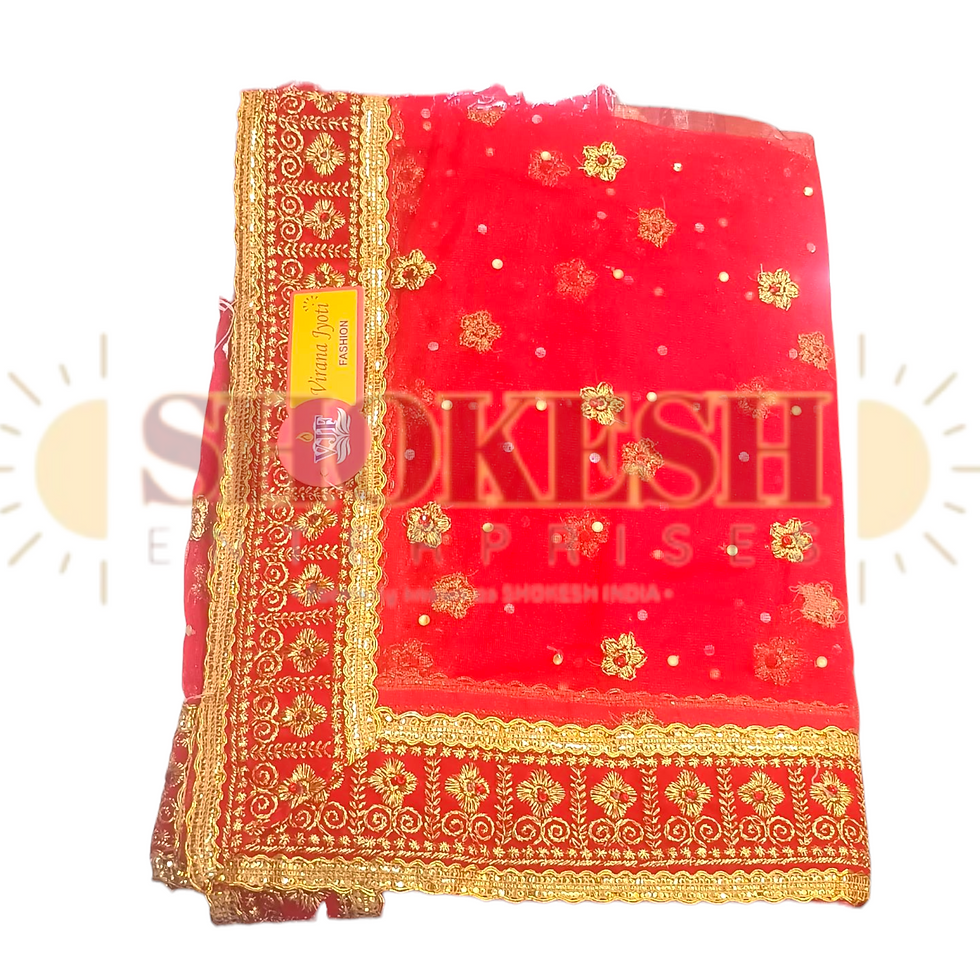
Byavara Darshan in Radha Krishna Mandir – A Divine Glimpse of the Eternal Wedding
- _Shokesh _

- Apr 17
- 3 min read
Introduction
In the spiritual world of devotion, few celebrations evoke the same sweetness and emotional depth as Byavara Darshan (also spelled Byavah Darshan or Vivah Darshan). This sacred event commemorates the divine wedding of Shri Radha and Shri Krishna, observed with immense love, bhakti, and grandeur in Radha Krishna temples across India—especially in Mathura, Vrindavan, Barsana, and many Gaudiya Vaishnav temples worldwide.

What is Byavara Darshan?
Byavara Darshan literally means “the divine sight of the wedding.” It marks the symbolic celebration of Radha and Krishna’s celestial marriage, believed to have occurred in spiritual realms. While the traditional scriptures narrate Radha and Krishna’s divine love as beyond worldly ties, many sects like Radha Vallabha Sampradaya, Nimbarka Sampradaya, and Gaudiya Vaishnavism rejoice in this divine wedding as the ultimate union of the soul with the Supreme.
Why Is It Celebrated in Radha Krishna Mandir?
Radha and Krishna are revered as the eternal divine couple, symbolizing pure, unconditional love. Their wedding is celebrated not as a historical event but as a spiritual Leela (divine play) that deepens the devotee’s connection with God.
Radha Krishna Mandirs celebrate Byavara Darshan to:
Remind devotees of the soul’s union with the Divine
Celebrate divine love that transcends material bonds
Reenact the Leelas to offer darshan (divine vision)
Inspire deeper bhakti (devotion) and surrender

Byavara Darshan Rituals and Celebrations
1. Shri Vigrah (Idol) Decoration:
Radha and Krishna are dressed in wedding attire – Radha in red lehenga/saree with bridal jewelry and Krishna in royal yellow or white. The idols are adorned like bride and groom.
2. Mandap Setup:
A beautifully decorated wedding mandap is set up in the temple premises, complete with flowers, lights, and symbols of auspiciousness.
3. Mangalam Aarti and Kirtans:
Special mangal aarti, bhajans, and kirtans narrate the wedding story. Devotees sing “Radha-Krishna Byavah Gaatha” with joy.
4. Symbolic Vivah Rituals:
Pandits conduct a symbolic Vivah Sanskar following Hindu rituals – Varmala (garland exchange), Kanyadaan, and Mangal Phera.
5. Prasadam and Feasting:
Grand bhog (food offering) is presented to the deities, and devotees enjoy prasadam, often sweet-based, like laddoos, kheer, and panchamrit.
6. Darshan and Blessings:
Devotees from near and far come to witness this rare darshan, believing that the Byavara Darshan blesses them with love, harmony, and marital bliss.
Spiritual Significance
Radha represents the soul (Jivatma) and Krishna the Supreme Soul (Paramatma). Their wedding signifies the eternal union beyond ego and materialism.
It teaches devotees the path of bhakti, where surrender, love, and longing are the only tools to reach God.
For unmarried devotees, it’s an occasion to pray for a life partner with divine virtues; for married couples, it's a reminder to nurture love and devotion.
Byavara Darshan in Vrindavan and Barsana
In places like Rangji Mandir (Vrindavan) and Shreeji Mandir (Barsana), Byavara Darshan is celebrated with dramatic reenactments, Ras Leela plays, and thousands of visitors. Devotees even wear wedding attire and participate in the celebration as symbolic guests of the divine wedding.

Conclusion
Byavara Darshan is not just a ritual—it’s a spiritual festival of love that lets us witness and participate in the celestial romance of Radha and Krishna. Every glance at the beautifully adorned deities evokes deep emotion and divine bliss. Celebrating this day in a Radha Krishna Mandir is like attending the most sacred wedding—where every heart is touched by divine love.
Popular Hashtags:
#ByavaraDarshan #RadhaKrishnaVivah #RadhaKrishnaMandir #DivineLove #RadhaKrishnaLeela #VrindavanUtsav #BhaktiCelebration #RadhaKrishnaPrem




















